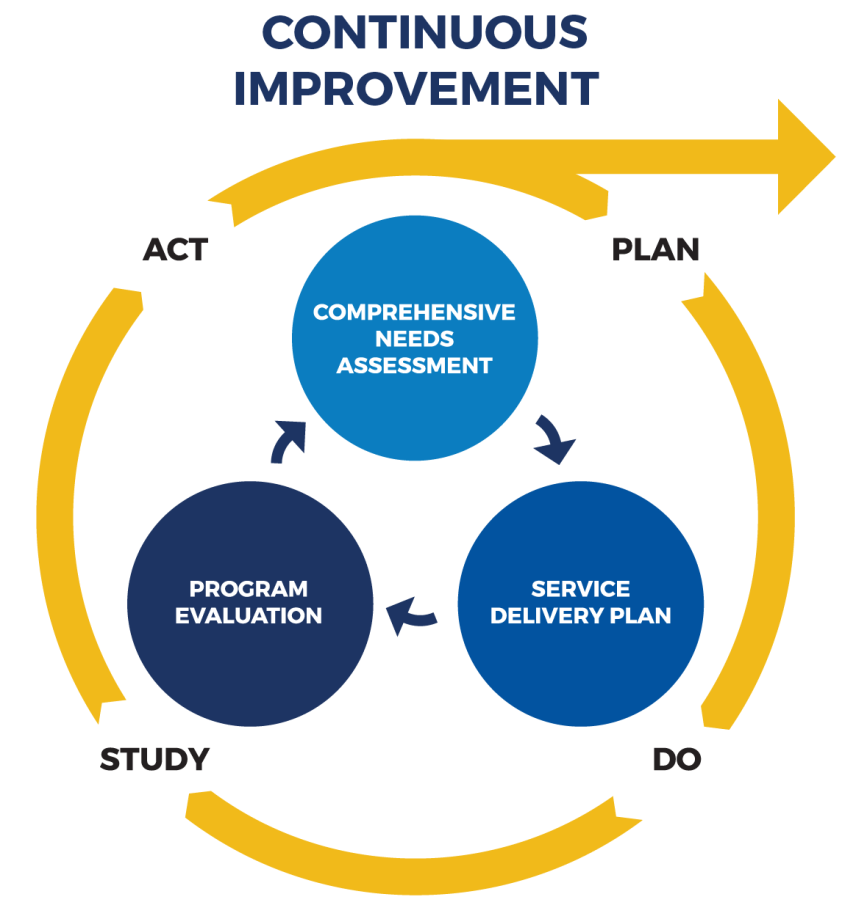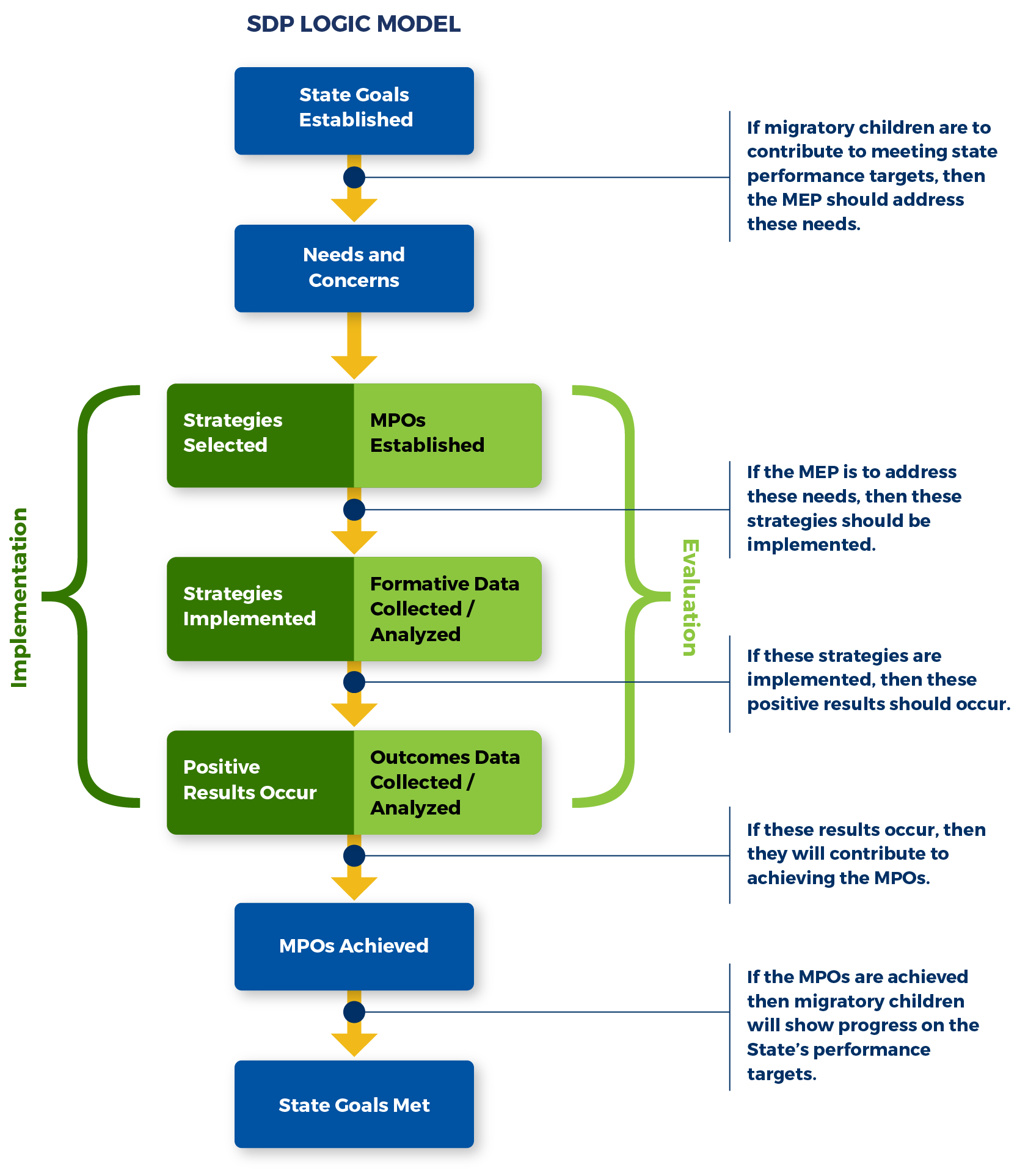In this section, you will find suggestions for what to include in each section of the SDP; this is not a prescribed format, but using it will help ensure you meet the statutory requirements for the SDP. In addition, you may want to review Suggested Table of Contents for the SDP, which you can use and customize to fit your SDP.
Executive Summary
An executive summary is usually the first section after the title page. It provides an opportunity for you to reinforce your state’s commitment to migrant education, feature the key needs of migratory children in the state, and introduce overall ways that the MEP plans to address these needs. Some state MEPs have a mission statement that should be included in this section. The executive summary is generally one to two pages long.
Introduction
-
Legislative Mandate
Summarizing the legislative mandate for SDPs will enable you to review requirements and will ensure your readers understand how the SDP is grounded in the law. -
Description of the State MEP
A description of the organization of the MEP will provide the foundation for readers to understand how the implementation of the SDP will take place. Useful information will include the organization of the state program, local programs, and key collaborators. Visuals, such as an organizational chart or state map that shows number and location of programs, allow for vast amounts of information to be easily shared. If you developed this information to share with the SDP Planning Team at the beginning of the process, it should be ready to insert into the SDP. -
Description of the Planning Process
A description of the planning process conveys a sense of commitment to a collaborative process and shows the range of experience and expertise that impacted the development of the SDP. Information in this section can be represented in lists and charts, enabling readers to quickly sense the process.
Consider including the following topics:
- Timeline
- SDP Planning Team members
- SDP Planning Team meetings (purposes and tasks) (See Section D, The General Framework of the Service Delivery Plan.)
Body of the SDP
The main body of the SDP begins with the following required components: state performance targets, needs assessment, service delivery strategies, MPOs, and evaluation. While each of these components will need to be featured separately, the alignment chart that you will develop in Section E, Addressing the Needs of Migratory Children should be included to illustrate how each of the components relates to the others.
- General Framework — SDP Alignment
- Performance Targets — List your State’s performance targets, since these were the starting point for the SDP.
- Needs Assessment — Include a summary of the Need Statements developed in the CNA.
- Service Delivery Strategies — List the strategies that were selected to address the needs.
- MPOs — Include MPOs that articulate what you would like to see happen as a result of the implementation of the strategies.
- Evaluation — Include evaluation questions for each MPO that reflect implementation and results. These will serve as the foundation for the development of the Evaluation Plan that is addressed in the Program Evaluation Toolkit.
Consider including a section that has the project plan with description of activities, programs, people carrying out the activities, a timeline, and resources needed.
-
Project Plan
The foundation for this section can be the project plan chart that you develop (see Project Planning Chart in Section D) that provides details on how the strategies in the SDP will be put into practice.
We recommend that the next four sections feature specialized topics for the SDP that will ensure that services are targeted and delivered efficiently.
-
Migratory Children Identified to Receive Priority For Services
This section should include your State’s process for identifying those migratory children most in need of services, including the criteria your state established for prioritizing these students for services and ways to ensure that services are directed toward meeting their unique needs. -
ID&R Plan
This section should include the process and structure for the ID&R plan. You should address staffing as well as their training. In addition, you should discuss what types of accountability and quality assurance are in place to ensure that sound eligibility determinations are made. -
Parental Involvement Plan
This section should include strategies that the State will implement to ensure that parents of migratory children are involved in the education of their children. The plan should include information on state and local migratory Parent Advisory Councils, supports for migratory parents, and resources. -
Exchange of Student Records
This section should include how the MEP will establish (or review) policies and procedures for sending and receiving records for migratory children through intrastate and interstate transfer, Migrant Student Information Exchange (MSIX) policies and procedures, strategies for providing training and information on MSIX, strategies for cross-state collaboration, and ways your state student information system can assist with record transfer.
For the final two sections, include plans for the MEP to support local projects in implementing the SDP and holding them accountable.
-
Implementation and Accountability in Local Programs
This section should include the following:- Ways that the MEP will communicate with local programs to keep them informed about the SDP and to solicit feedback
- A technical assistance plan to build the capacity of local operating agencies (LOAs) to plan and implement their programs
- Strategies for ensuring that the local granting process requires applicants to implement the SDP
- A plan for local monitoring, including specific indicators for which LOAs will be held accountable
-
Looking Forward
This section should include how you will communicate the SDP and ensure that it remains relevant. Topics to include are as follows:- Communicating the SDP to local projects
- Communicating the SDP to other stakeholders
- Reconvening the SDP Planning Team to review formative data and emerging issues and determine any needed changes in the SDP
- Setting a target date for the next CNA and SDP process
- Building and maintaining collaborations


